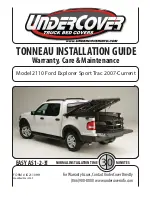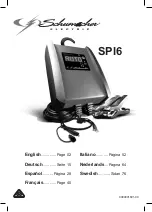
cannot accept responsibility for this type of dam‐
age.
Always observe the maximum permissible speed
specified for the summer tires you have installed
(
→
page 217).
Once you have installed the summer tires:
R
Check the tire pressure (
→
page 206)
R
Restart the tire pressure monitor
(
→
page 212)
Information on M+S tires
Use winter tires or all-season tire at temperatures
below 50 °F (10 °C). Both types of tire are identi‐
fied by the M+S marking.
Only winter tires bearing the
i
snowflake
symbol in addition to the M+S marking provide
the best possible grip in wintry road conditions.
Only these tires will allow driving safety systems
such as ABS and ESP
®
to function optimally in
winter. These tires have been developed specifi‐
cally for driving in snow.
Use M+S tires of the same make and tread on all
wheels to maintain safe handling characteristics.
Always observe the maximum permissible speed
specified for the M+S tires you have installed
(
→
page 217).
If you install M+S tires that have a lower maxi‐
mum permissible speed than the maximum
design speed of the vehicle, affix an appropriate
warning sign in the driver's field of vision. You
can obtain this at a qualified specialist workshop.
Once you have installed the winter tires:
R
Check the tire pressure (
→
page 206)
R
Restart the tire pressure monitor
(
→
page 212)
Notes on snow chains
&
WARNING Risk of accident due to incor‐
rect installation of snow chains
Vehicles with rear-wheel drive: if you have
installed snow chains to the front wheels,
they may drag against the vehicle body or
chassis components.
This could cause damage to the vehicle or the
tires.
#
Never install snow chains on the front
wheels.
#
Only install snow chains on the rear
wheels in pairs.
#
Vehicles with twin tires: install the
snow chains to the outer wheels.
&
WARNING Risk of accident due to
unsuitable snow chains
Vehicles with all-wheel drive do not have suf‐
ficient clearance on the front axle for com‐
mercially available snow chains.
When you install commercially available snow
chains, the snow chains may come loose and
damage chassis components or brake hoses.
#
Only install snow chains which have
been approved for these tires by
Mercedes-Benz.
For safety reasons, Mercedes-Benz recommends
that you only use snow chains that have been
checked and approved. You can obtain informa‐
tion about snow chains from any qualified spe‐
cialist workshop.
*
NOTE Damage to the wheel trim from
mounted snow chains
If snow chains are mounted to steel wheels,
the wheel trims can be damaged.
#
Remove the wheel trims of steel wheels
before mounting snow chains.
Observe the following notes when using snow
chains:
R
Snow chains are only permissible for certain
wheel/tire combinations. You can obtain
information on them at a qualified specialist
workshop.
R
For safety reasons, only use snow chains that
have been specifically approved for your vehi‐
cle by Mercedes-Benz, or snow chains with
the same quality standard.
R
The snow chains must be retightened after
driving approximately 0.6 miles (1 km). This is
the only way to ensure the snow chains are
optimally seated with clearance to adjacent
components.
R
Vehicles with all-wheel drive: install snow
chains on the wheels on the rear axle. On
vehicles with twin tires, install the snow
Wheels and tires 205
Summary of Contents for Sprinter 2019
Page 7: ......
Page 19: ...ASpare wheel example 227 At a glance Emergencies and breakdowns 17...
Page 298: ......
















































